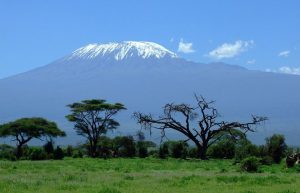Serengeti National Park Weather: Monthly Climate Overview
Serengeti National Park, located in Tanzania, is one of the most renowned wildlife destinations in the world. Its diverse landscapes, abundant wildlife, and stunning natural beauty draw visitors from around the globe. Understanding the weather patterns of the Serengeti is crucial for planning a successful safari experience, as the climate can greatly impact animal sightings and overall comfort.
Serengeti National Park Weather Patterns
The Serengeti experiences a tropical savanna climate, characterized by distinct wet and dry seasons. The dry season typically runs from June to October, while the wet season occurs from November to May. During the dry season, the park transforms into a dry, dusty landscape, making it easier to spot animals gathering around water sources. In contrast, the wet season brings lush vegetation and increased bird activity, but also muddy roads and potentially obstructed views due to foliage.
Temperature-wise, the Serengeti maintains a relatively consistent climate throughout the year, with average highs ranging from 26°C to 30°C (79°F to 86°F) and lows around 15°C to 20°C (59°F to 68°F). However, it is important to note that mornings and evenings can be chilly, so packing layers is recommended.
Monthly Climate Overview for Serengeti
January to March
The beginning of the year marks the tail end of the wet season in the Serengeti. Expect heavy rainfall and high humidity levels during this time, making wildlife sightings a bit more challenging. However, the lush greenery and baby animals born during this period can make for a unique safari experience.
April to June
As the wet season transitions into the dry season, April typically sees sporadic showers. By May and June, the park starts to dry up, making it easier to spot wildlife congregating around water sources. Daytime temperatures are pleasant, but nights can be cooler, requiring warmer clothing.
July to September
July to September is considered the peak safari season in the Serengeti. During these months, the park is dry and wildlife sightings are abundant, including the Great Migration of wildebeest and zebra. The weather is mild and sunny, making it an ideal time for game drives and outdoor activities.
October to December
With the return of the short rains in October, the Serengeti begins its transition back to the wet season. November and December bring increasing rainfall and lush vegetation, attracting a variety of bird species. While wildlife sightings may be more challenging due to dense foliage, the park is still teeming with life.
In conclusion, understanding the monthly climate variations in the Serengeti is essential for planning a successful safari adventure. Whether you prefer the dry season for optimal wildlife sightings or the wet season for its vibrant landscapes, Sunset Africa Safari can help organize your dream safari experience. For booking inquiries, please contact info@sunsetafricasafari.com.


